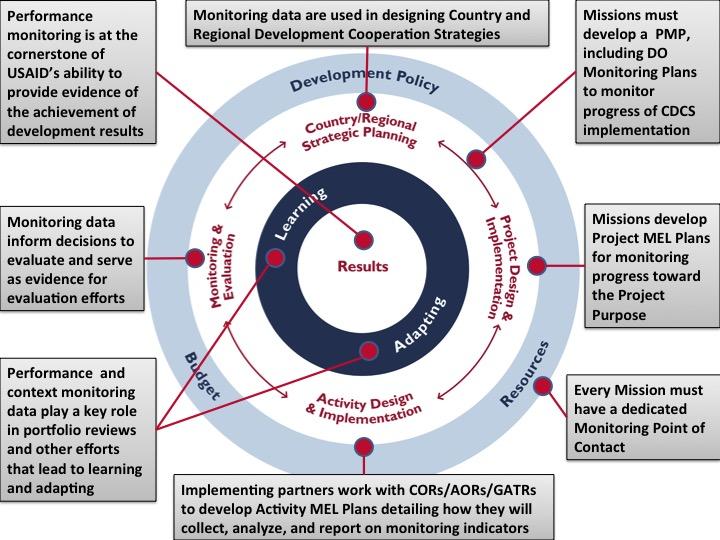The Program Cycle is USAID’s operational model for planning, delivering, assessing, and adapting development programming in a given region or country to advance U.S. foreign policy. It is described in USAID policy ADS 201. Monitoring plays a critical role throughout the Program Cycle and is used to determine whether USAID is accomplishing what it sets out to achieve, what effects programming is having in a region, and how to adapt to changing environments.
Performance monitoring and context monitoring occur throughout the Program Cycle, from Country or Regional Development Cooperation Strategies (CDCS/RDCS), to projects, to activities. Data from monitoring are used to: assess whether programming is achieving expected results; adapt existing activities, projects, and strategies as necessary; and, apply Agency learning to the designs of future strategies and programming. The diagram below identifies some of the ways in which monitoring is embedded in the Program Cycle.

